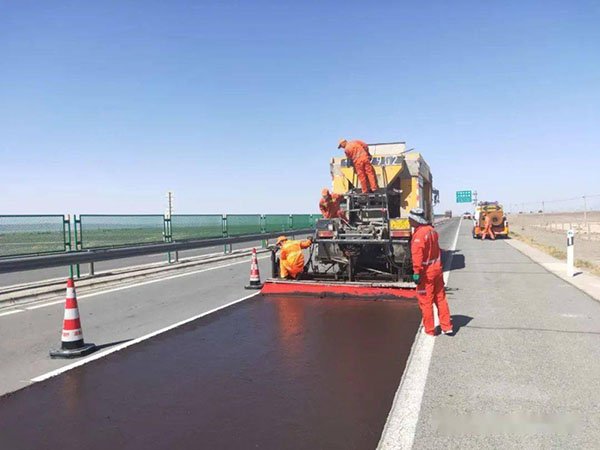1. Introduction to Micro Surface Construction
Micro surfacing construction is a preventive maintenance method mainly used for the maintenance and repair of road surfaces such as highways, urban arteries, airport runways, etc. It uses a dedicated micro surfacing paver to mix modified emulsified asphalt, coarse and fine aggregates, fillers, water, and additives in a certain proportion to form a slurry mixture, which is then evenly spread on the road surface to form a thin layer. This thin layer has high anti-skid and durability properties, can quickly open up traffic, and can effectively solve the poor oil condition of the original road surface and fill the subtle cracks on the road surface, thereby improving the service life of the road surface.
2. Specific steps for micro surface construction
(1) Material preparation: Prepare raw materials such as modified emulsified asphalt, coarse and fine aggregates, fillers, water, and additives.
(2) Mixing: Use mechanical equipment to mix these materials into a slurry mixture according to the design ratio.
(3) Spread: Spread the mixed material evenly on the original road surface.
(4) Compaction: Use a roller to compact the mixture and ensure a tight bond with the road surface.
(5) Open traffic: After the paving is completed, the road surface can be opened to traffic quickly because micro surface construction has the characteristics of rapid cracking and solidification.
3. Advantages of Micro Surface Construction
(1) High skid resistance: It can effectively improve the skid resistance of the road surface and reduce the occurrence of traffic accidents.
(2) Durability: Thin layers have good durability and can extend the service life of the road surface.
(3) Rapid opening of traffic: After construction is completed, traffic can be quickly opened to reduce the impact on traffic.
In short, micro surfacing construction is an efficient and fast preventive maintenance method, suitable for various road surfaces that require rapid repair and maintenance.


